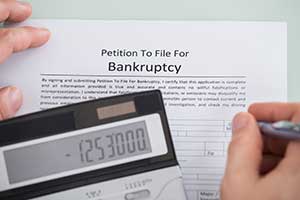
Finally, Equifax is going to do something to change its unfair policy that has been making it more difficult for Chapter 13 filers to remove the red flag of bankruptcy from their records. For a long time, Equifax has been keeping bankruptcies on credit reports for 10 years, while the other two major credit rating agencies, Experion and TransUnion, removed them after 7 years. The federal Fair Credit Reporting Act allows a bankruptcy to remain on credit reports for up to 10 years, but the credit reporting agencies have leeway to decide to do so for less time. If you filed a Chapter 7 bankruptcy, all the agencies kept a flag on their reports for the full 10 years. While Equifax’s Chapter 7 policy was the same as that of the other agencies, it left a flag on the reports for Chapter 13 filers for an additional three years.
Since this negative flag on credit history can affect the ability to obtain credit, qualify for loans, and even gain employment, it’s in the best interest of the consumer to have this removed as soon as possible.
While bankruptcy and credit rebuilding issues are complicated, the skilled and seasoned Ohio bankruptcy attorneys at Fesenmyer Cousino Weinzimmer understand the difficulties involved. If you find yourself overwhelmed with financial problems, we will work with you to make sure you understand your options and help you decide on solutions that make sense in your individual case. We offer a free consultation to examine your situation, so call one of our conveniently located office branches at 614-228-4435 (Columbus), 937-222-7472 (Dayton), or 877-654-5297 (Cincinnati) or email for your free consultation.
Chapter 7 and Chapter 13
A Chapter 7 bankruptcy allows you to discharge unsecured debts, including credit cards, medical bills and installment loans, often in a matter of months. It stops, prevents or resolves collections, loan deficiencies, repossessions, wage garnishment and civil judgments. It can help you eliminate the bills you cannot afford, while allowing you to keep assets such as your car and your house.
A Chapter 13 bankruptcy is a reorganization that enables debtors to repay a portion of debt through a court-approved repayment plan over a three- to five-year period. If you successfully complete the repayment plan, remaining eligible debt is discharged, and you can keep your assets. To file Chapter 13 bankruptcy, you must have a regular source of income and have some disposable income to apply toward your Chapter 13 payment plan.
Initially, Chapter 7 and Chapter 13 have a similar effect on debtors’ credit scores, one that diminishes over time. Bankruptcy is a negative mark, but that doesn’t mean that declaring bankruptcy will invariably damage someone’s credit score. In fact, research shows that most people who declare bankruptcy actually see their score rise in the following months. That’s because the typical score is so low that the negative effect of the bankruptcy is outweighed by the positive effect of wiping out debt. And once bankruptcy flags are removed by the credit reporting agencies, consumers’ credit scores jump by about 10 points.
Why the Differences?
The credit rating agencies voluntarily decided to treat Chapter 13 cases differently than Chapter 7 because Chapter 13 typically involves the repayment of some debt, while Chapter 7 does not. However, due to the discrepancies between the agencies, if you applied for a loan, apartment, or job seven years after your Chapter 13 bankruptcy, and someone checked your record under an Equifax, you could possibly be turned down for credit that you should be entitled to. This would not happen if they checked your record at TransUnion or Experian. This inequity in reporting can create issues for a lot of people.
What You Can Do
- Be aware and dispute inaccuracies — Equifax states it will now join the other agencies and remove flags from your credit rating in seven years; so if you are affected, make sure they do so. The company also allows consumers to dispute items they believe are inaccurate. If you dispute an item, Equifax has 30 days to investigate and, if they cannot validate the information they must remove the item in question.
- Know Your Credit Score — You can check it for free at myBankrate or com’s free Credit Report Card, and you can request one free copy of your credit report per year from Equifax, Experian and TransUnion at AnnualCreditReport.com. Examine your credit reports and make sure there are no errors or inconsistencies, and report any you find.
CONTACT US TODAY FOR A FREE INITIAL CONSULTATION
While filing for bankruptcy may be a last resort, often it is the best solution for debtors who need a chance for a fresh financial start and a path to a brighter future. If you’re a good candidate for bankruptcy, filing can keep creditors from harassing you and seizing your possessions, allow debts to be forgiven, and provide a way for you to keep many of your assets and begin to rebuild your life.
If you find yourself overwhelmed by tactics creditors use to collect on debts, the experienced Ohio debt-relief attorneys at Fesenmyer Cousino Weinzimmer can help. We offer a free consultation to evaluate your entire financial situation and determine the best fit for your particular circumstances. We will make sure you are aware of all your options and help you decide on the financial recovery path that makes sense in your individual case. We know the courts and the system and will walk you through the process every step of the way.
Delaying can only worsen your situation, so call the Ohio attorneys at Fesenmyer Cousino Weinzimmer today. Call one of our conveniently located office branches at 614-228-4435 (Columbus), 937-222-7472 (Dayton), or 877-654-5297 (Cincinnati) or email for your free consultation.


